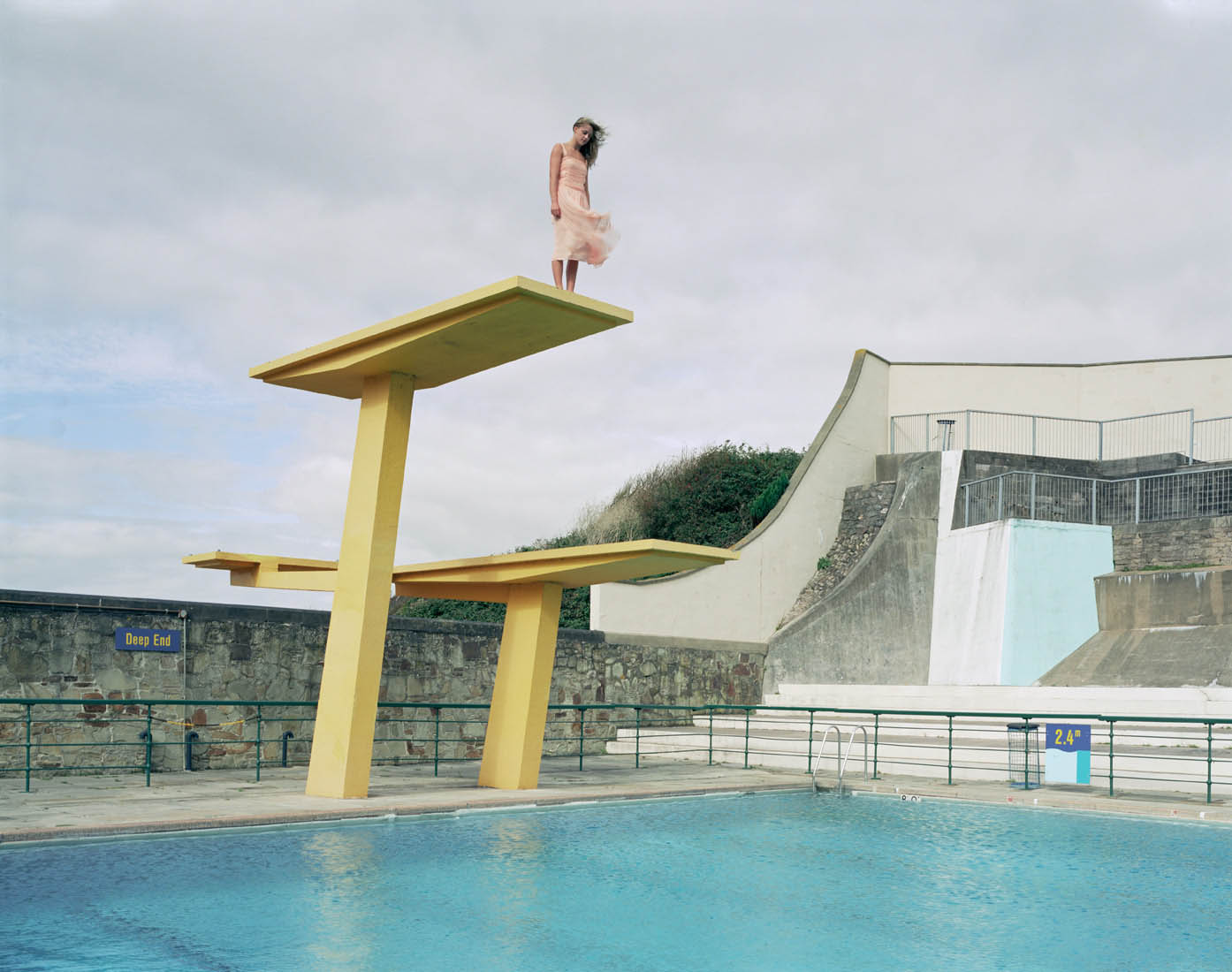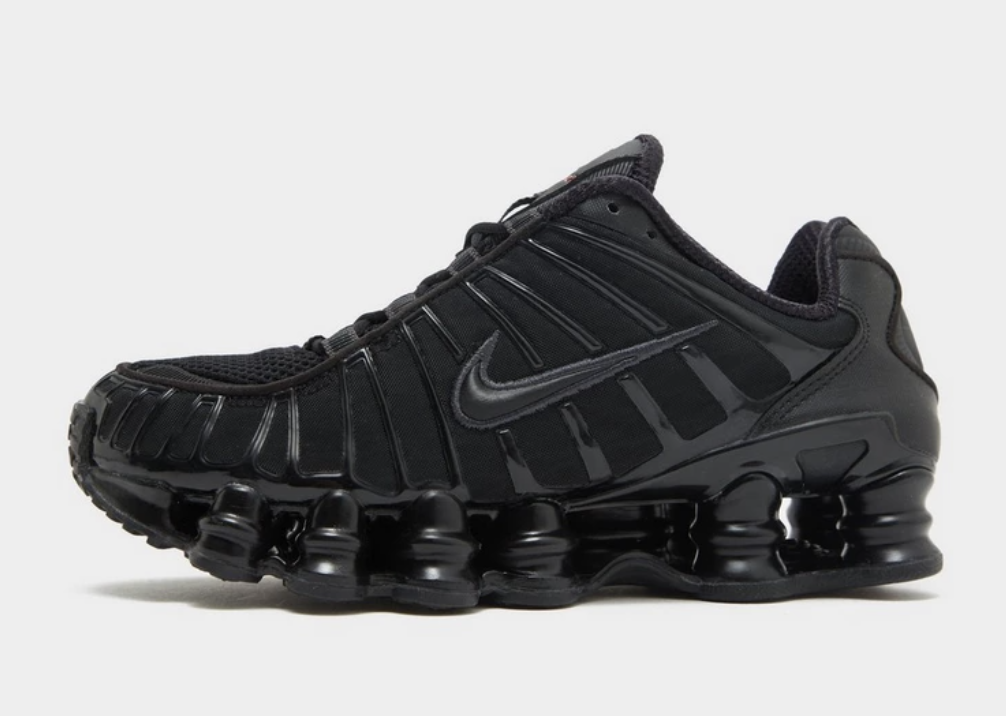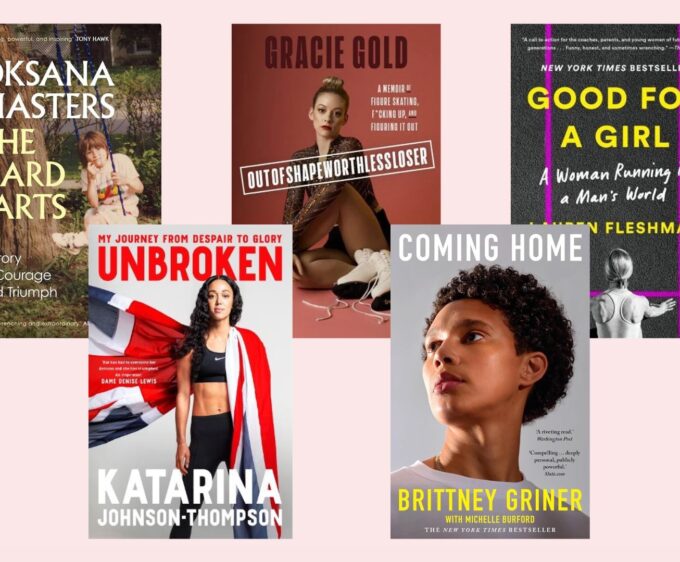
Capturing Contortion
"I learned that contortionism is one of the oldest physical art forms." Fascinated by contortionists, fine-art photographer Julia Fullerton-Batten tells Glorious how her series came to life
By Glorious
Photography by Julia Fullerton-Batten
Julia Fullerton-Batten is a fine-art photographer whose work is exhibited worldwide and now encompasses fifteen major projects, each of which comprises multiple images. She uses unusual locations, often street-cast models, staged tableaux and over the year she has continuously developed her sophisticated cinematic lighting techniques. An author of three books, a Hasselblad Ambassador, a speaker and international competition judge, Glorious talks to Julia about her work and series ‘Contortion’.
Glorious: We love the hyper-real atmosphere of the images in your latest series ‘Contortion’. Can you tell us more about the project? What brought your attention to these women and why and how did you want to photograph them?
Julia Fullerton-Batten: I first met a professional contortionist when I had to cast a young woman for my short film ‘1814 Frost Fair’. She was one of the many performers whom I filmed in my award-winning film. Through her engagement I learned that contortionism is one of the oldest physical art forms, dating back to ancient civilisation as illustrated in paintings and sculptures from ancient Greece, Rome and Egypt. Apart from the bodily characteristics of flexibility, strength and apparent double-jointedness, a contortionist requires years of dedication to extremes of discipline and training, often beginning in childhood, to acquire the fluid artistry needed to create a serpentine dance of the human body. In the past, contortionists were associated almost exclusively with circuses and fairs, where it entertained by incorporating elements of humour, drama, shock, sensuality, or a blend of all of them. Nowadays it has also become a hobby much enjoyed by many youngsters.
When Covid first struck I found myself reflecting on the pathos of my contortionist in the shoot. I felt it highlighted our heightened sensitivities to this previously unknown threat to our existence. Feelings of extreme anxiety, vulnerability, loneliness, and depression were only partially offset by our innate inner strengths of humour, fortitude, combativeness and an overwhelming desire to just somehow cope with the situation.

Glorious: Were the photographs constructed around the models, or was the vision already in place before you had the contortionists in mind?
Julia Fullerton-Batten: After my first hyper successful portrait of my female contortionist in my film ‘1814 Frost Fair’ I began to follow contortionists in the same group through social media. They appealed to me for their very unique body poses. They are so flexible and it feels like they are so light, as if they are floating in the air. As it was during Covid lockdown I invited them to my garden on a warm summer’s day and we tried different body positions and clothing that was suitable and helped tell the story. I hired interesting locations such as a derelict Jewish boarding school in Oxfordshire, a ‘members’ only’ spectacular Georgian townhouse in East London, and an architect’s award-winning home designed by architect Adam Richards.
Most of the girls are used to performing on stage. Like all athletes, it is very important for them to warm-up properly prior to the shoot with exercises and practice stretching. We shot a sequel of settings with individual girls. I made sure that they had as much time as needed on set for their preparation. It takes a lot physically to engage in their poses, especially a deep backbend as all the other muscles are used to protect their spine. It was interesting to discover that the girls can only eat small amounts on the day they perform. During the shoot I rotated the girls to give them rest breaks.

ARTISTRY

Glorious: You have previously mentioned that you started out by winning a photography competition. Did you have any idea back then that you would be here with a project like ‘Contortion’?
Julia Fullerton-Batten: I had long decided that I wanted to become a photographer and studied photography at a college in Reading. After graduating, I worked as a freelance photographic assistant for 5 years. I won a competition and a German agent gave me my first major commission. A couple of years later I won another major competition that catapulted me into the fine-art gallery world. I now happily live in the world of both commercial assignments and fine-art photography. My fine-art work has always been large, cinematic and staged, with some projects taking about 3 years to complete. ‘Contortion’ is a smaller project that I really enjoyed. The images have won accolade worldwide, with an empathy both for the photographic art and for the physical and artistic skills of my young models.
Glorious: Your photographs are commonly shown through a hyper-realistic lens, how do you achieve this and what is your process to create these images?
Julia Fullerton-Batten: I start with an idea and work on it, carrying out exhaustive research – online, from books, visits to museums or sites of relevance. I embellish the setting for each image in my mind or sketch it out on a mood board. I source and select locations, models, clothing and props, paying great attention to detail – I am a very meticulous in authenticity when portraying any of my images. On the day of the shoot everything is planned to the last degree so that I can then embody myself and empathise in getting the most realism out of my idea. A lot of the surreal quality of my images are a combination of working with planned colour palettes married with my lighting. I will create lighting in odd places that gives a mysteriously surreal feeling to the images.

Glorious: What role does location and lighting have in your work?
Julia Fullerton-Batten: You can take a very mundane situation and bring in the magic with lighting. This is what excites me, seeing the change happen in front of the camera. The locations create the canvas, the physical environment for the setting and the story I want to tell. I am incredibly lucky to be living in London and having access to location libraries. We can hire anything from a housing estate to a mansion, even a prison cell ….
Glorious: Do you prioritise drama or narrative in your work, or do both go hand in hand?
Julia Fullerton-Batten: Without a doubt both go hand in hand. I call myself a storyteller producing visual narratives complete with passion and drama.

NARRATIVE

Glorious: The flexibility of the female form is at the forefront of your ‘Contortion’ series. Would you say you have a fascination with women telling stories with their bodies, with reference to your entire work?
Julia Fullerton-Batten: Up until now, the female form predominates in my work; My projects reveal a study of the female body form, such as in ‘Unadorned’ and ‘The Act’. How I choose and dress my models is also indicative of my consideration of body form and facial features, but I don’t think it is out of proportion to the same considerations that I make in my choice of male models. My major goal is to get my greater story across. I don’t find it a preoccupation with a woman’s bodily shape being my major consideration.
Glorious: How did you find photographing iconic British females in sport for the ‘Change the Game’ campaign, especially with them all in one shot?
Julia Fullerton-Batten: I really enjoyed meeting these successful sportswomen, many of whom have now progressed successfully to other careers on TV, as skilled reporters or in advisory fields. It was interesting meeting and getting to know them all from such widely diverse areas of British sport. They were all very easy going when it came to the shoots, however, due to logistics and timings I had to photograph some of them in Scotland and others in London. They were not all together at the same time.

Glorious: Besides your photography, do you have time for a sport that you partake in?
Julia Fullerton-Batten: I am generally a very active person and go to the gym regularly, more often than not five times a week. I also regularly do yoga. On summer vacations our family often go walking in Scotland or the Dolomites. That is when I am the happiest, being near nature. Before children my favourite trips and happiest memories were trekking in Bolivia, the Route Burn track in New Zealand through fiords, rocky coasts, towering cliffs, lakes and waterfalls and admiring the glaciers in Torres del Paines National Park in Chile’s Patagonia region.
Glorious: Do you prefer the freedom of your own fine art photography projects, or working on commissions that often have a tighter brief?
Julia Fullerton-Batten: I love shooting my fine-art projects. They are my creation from beginning to end. I’m not so sure that I would claim that it offers me ‘freedom’ though as I’m super critical in my selection and refinement of an idea, background research, sourcing models, locations and props. Then comes arranging the logistics of the shoot – hiring additional equipment, putting a team together, ensuring that people get to the location and are taken care of when there, breaking down and leaving the location, paying everybody. And then comes editing, supervising post-production, and finally handling print orders and their shipment. In effect, I’m a one-person operation and the financial risk is totally mine.

Working on commission entails submitting a treatment and describing how I intend to handle the brief; there is frequent technical liaison with the client before the day of the shoot to finalise details, and often I am involved in sourcing models and suggesting locations, as well as having total involvement with the post-production team. In many respects, nowadays a photographer is intensely engaged in the entire process, handling a commission doesn’t merely mean turning up on the day with my camera. Basically, working on commissions, I become a major person engaged with a larger team, my skills are needed for the assignment to succeed, bringing a fair element of stress with it. What I love about creating my own art projects is when I get invited to the most beautiful places in the world to exhibit and give talks. This is a very rewarding experience, often seeing the project hanging beautifully framed on galleries walls.
Glorious: Can you tell Glorious what you’re working on next and what we can expect from your future projects?
Julia Fullerton-Batten: I am still working on a project ‘Old Father Thames’ that has been in the making for over 4 years now. They are historical stories along the River Thames that I am recreating. I hope to have the works published into a monograph at the end of next year
Glorious: Where can we find you?
Julia Fullerton-Batten:
www.juliafullerton-batten.com https://www.instagram.com/julia_fullertonbatten/









